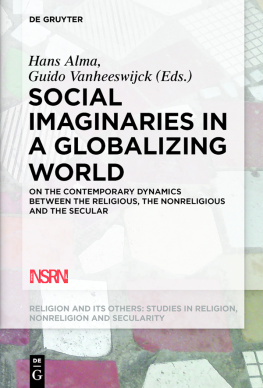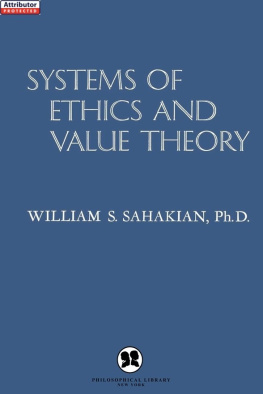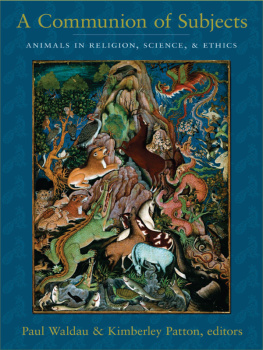Pitirim A. Sorokin - Social and Cultural Dynamics
Here you can read online Pitirim A. Sorokin - Social and Cultural Dynamics full text of the book (entire story) in english for free. Download pdf and epub, get meaning, cover and reviews about this ebook. year: 1957, publisher: Sargent (Porter),Publisher,U.S., genre: Religion. Description of the work, (preface) as well as reviews are available. Best literature library LitArk.com created for fans of good reading and offers a wide selection of genres:
Romance novel
Science fiction
Adventure
Detective
Science
History
Home and family
Prose
Art
Politics
Computer
Non-fiction
Religion
Business
Children
Humor
Choose a favorite category and find really read worthwhile books. Enjoy immersion in the world of imagination, feel the emotions of the characters or learn something new for yourself, make an fascinating discovery.

- Book:Social and Cultural Dynamics
- Author:
- Publisher:Sargent (Porter),Publisher,U.S.
- Genre:
- Year:1957
- Rating:4 / 5
- Favourites:Add to favourites
- Your mark:
- 80
- 1
- 2
- 3
- 4
- 5
Social and Cultural Dynamics: summary, description and annotation
We offer to read an annotation, description, summary or preface (depends on what the author of the book "Social and Cultural Dynamics" wrote himself). If you haven't found the necessary information about the book — write in the comments, we will try to find it.
Social and Cultural Dynamics — read online for free the complete book (whole text) full work
Below is the text of the book, divided by pages. System saving the place of the last page read, allows you to conveniently read the book "Social and Cultural Dynamics" online for free, without having to search again every time where you left off. Put a bookmark, and you can go to the page where you finished reading at any time.
Font size:
Interval:
Bookmark:
SOCIAL & CULTURAL DYNAMICS
A Study of Change in Major Systems of Art, Truth, Ethics, Law and Social Relationships
Revised and abridged in one volume by the author
PITIRIM SOROKIN
extending horizons books Porter Sargent Publisher Boston
Copyright 1957 by Pitirim A. Sorokin Second Printing, November 1970
Library of Congress Catalog Number 57-14120 ISBN - 87558 - 029-7
FOREWORD
Some twenty years have passed since the original publication of Social and Cultural Dynamics in four volumes. During this period, numerous popularizations of the work have appeared in the form of articles, doctoral theses, chapters in texts on sociological theories, and books like my own Crisis of Our Age (so far translated into eight languages), F. R. Cowells History, Civilization and Culture: An Introduction to the Historical and Social Philosophy of P. A. Sorokin, Winston C. P. Fans Introduction to P. A. Sorokin's Theories (in Chinese), Jacques J. Maquets Sociologie de la Connaissance (The Sociology of Knowledge in American edition), Johanne Gjermoes P. A. Sorokins Social and Historical Philosophy (in Norwegian), among others. However admirable these popularizations, they in no way suffice as an authentic abridged version of the Dynamics. None of these works reproduces verbatim the text, the order of chapters of Dynamics; neither do they outline all of the important theories developed in it.
During these twenty years I have been urged by several scholars and readers to prepare a one-volume abridgement of this work which, by cutting out all the secondary paragraphs, pages and chapters of the original text, would reproduce verbatim all its important parts in exactly the same order and phrasing in which they were originally given in the four volumes. In the friendly opinion of these scholars and readers such an abridgement would make the Dynamics accessible to a large circle of scholars and intelligent readers who would otherwise have neither the time to study nor the means to purchase the bulky four-volume edition. When Extending Horizons Books of Boston in February, 1957, and the Instituto de Estudios Politicos of Madrid offered to bring out such an edition respectively in English and Spanish, I accepted and this one-volume edition upon which I immediately set to work, is the result of my abridgement.
The condensation of Dynamics to one-fourth of its original size is effected by cutting out: (1) all the paragraphs and pages of secondary importance; (2) practically all the numerous foot-notes; (3) references and extensive bibliography ; (4) all the appendixes and the sources on which the statistical tables and their respective conclusions
are based ; and, finally, (5) the first eleven chapters of the fourth volume. Of these omitted parts, the numbers: 2, 3, 4, 5 are cut out not because they are unimportant, but for the reason that they are not urgently necessary for comprehension of the basic conceptual framework of the Dynamics, and because they can easily be found by any probing researcher in the unabridged edition of the work. So much for explanation of what is omitted and reproduced in this abridged edition.
Now a few words about what is added to, and changed from the original text of the work. Besides a basic bibliography, a few short paragraphs are added to bring the development of main trends and fluctuations up to date. While the quantitative evidence and qualitative analysis of Dynamics (published in 1937-41) does not go beyond the years 1925-30, added paragraphs outline briefly what, if any, important changes have occurred during this recent period, also which of the old trends have continued, and whether several forecastings of the Dynamics have come to pass. In this way, the analysis of the Western sociocultural world is brought up to date.
As to the changes in the original text of the work, practically no change is made because none is needed. Since the original publication historical events have been unfolding according to its diagnosis and prognosis, and its main forecastings have been coming to pass during the last twenty years. There is no need for correction of any of its significant propositions, since up to this moment, the historical processes have been proceeding as outlined.
In accordance with these prognoses, three basic processes of the last few decades have consisted in: (a) an epochal shift of the creative center of mankind from Europe to the larger area of the Pacific-Atlantic ; (b) in a progressive disintegration of Sensate culture, society, and man; and (c) in an emergence and slow growth of the first seedlings of the new Idealistic or Ideational sociocultural order.
We all know that up to roughly the fourteenth century the creative leadership of mankind was carried on by the peoples and nations of Asia and Africa. While our forefathers in the West had still a most primitive way of life and culture, in Africa and Asia the great civilizations the Egyptian, the Babylonic, the Iranic, the Summerian, the Hittite, the Hindu, the Chinese, the Mediterranean (the Creto-Mycenaean, the Graeco-Roman, the Arabic) and othersemerged,
grew, and fluctuated in their repeated blossoming and decay for millennia. The Western, Euro-American, peoples were the latest in taking the creative leadership of mankind. They have carried this torch only during the last five or six centuries. During this short period they discharged their creative mission brilliantly, especially in the fields of science, technology, Sensate fine arts, politics, and economics. At the present time, however, the European monopolistic leadership can be considered as about ended. The unfolding of the history of mankind is already being staged on the much larger scenery of Asiatic-African-American-European cosmopolitan theater. And the stars of the next acts of the great historical drama are going to be: besides Europe, the Americas, Russia, and renascent great cultures of India, China, Japan, Indonesia, and Islamic world. This epochal shift is already under way and is rapidly moving from day to day. It has manifested itself in the dissolution of the great European empires like the British and the French, in the decreasing political and cultural influence of Europe in the international relationships, in the shift of creativity from several European nations to other continents : the Anglo-Saxon to the United States, Canada, and Australia; the Spanish and Portuguese to the Latin America; in the creative growth of the Asiatic Russia in comparison with its European part, and so on. A still stronger manifestation of this shift is the unquestionable renaissance of the great cultures of Asia and Africa: the Indian, the Chinese, the Japanese, the Indonesian, the Arabic, and others. This renaissance lies at the basis of a successful liberation of these nations from Colonial servitude. It has shown itself in a rapid growth of their political and social independence, and of their influence in international affairs ; in their rapid scientific and technological development, in the successful diffusion of their religious, philosophical, ethical, artistic and cultural values in the Western world; as also many other phenomena mark the shift of the creative leadership of mankind from the monopolistic domination of Europe to the Americas, Asia, and Africa. Such is the first basic sociocultural process of the last few decades.
The other two processes: a continued decay of Sensate sociocultural system of the West and an emergence and growth of a new Idealistic or Ideational sociocultural order are possibly still more important for the present and the future of mankind. Both these trends increasingly manifest themselves in all compartments of Western
culture and society: in the dynamic changes in science, philosophy, religion, fine arts, ethics, law, politics, and economics, in remodeling of our social institutions, in revaluation of our system of values, and in the transformation of our mentality and overt behavior. Our whole social, cultural, and personal way of life is in the state of a tragic and epochal transition from the dying Sensate culture of our magnificent yesterday to the coming new culture of the creative tomorrow. We are living, thinking, and acting at the darkest hour of this transitory night with its nightmares, gigantic destruction, and heartrending horrors. If mankind can avoid the irretrievable catastrophe of greater world wars, the dawn of a new magnificent order in the human universe is waiting to greet the coming generations.
Next pageFont size:
Interval:
Bookmark:
Similar books «Social and Cultural Dynamics»
Look at similar books to Social and Cultural Dynamics. We have selected literature similar in name and meaning in the hope of providing readers with more options to find new, interesting, not yet read works.
Discussion, reviews of the book Social and Cultural Dynamics and just readers' own opinions. Leave your comments, write what you think about the work, its meaning or the main characters. Specify what exactly you liked and what you didn't like, and why you think so.




